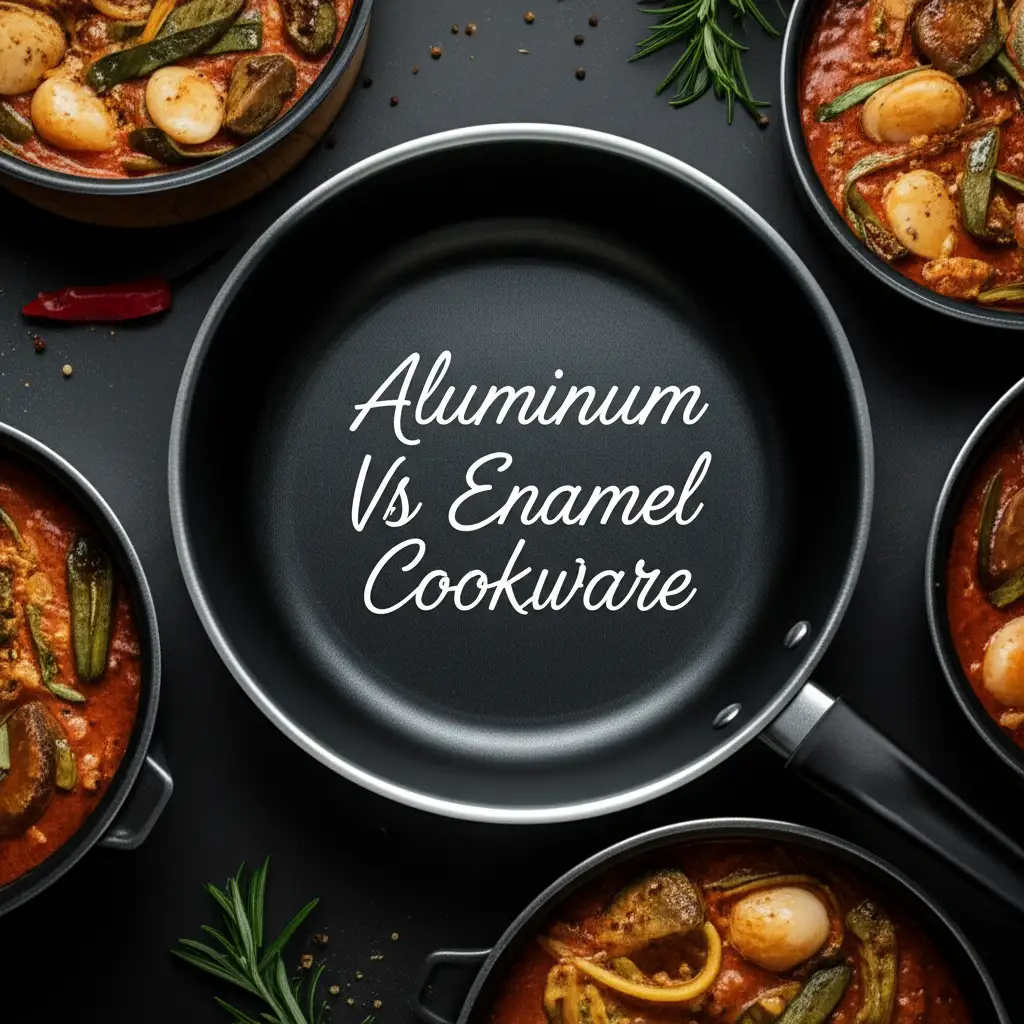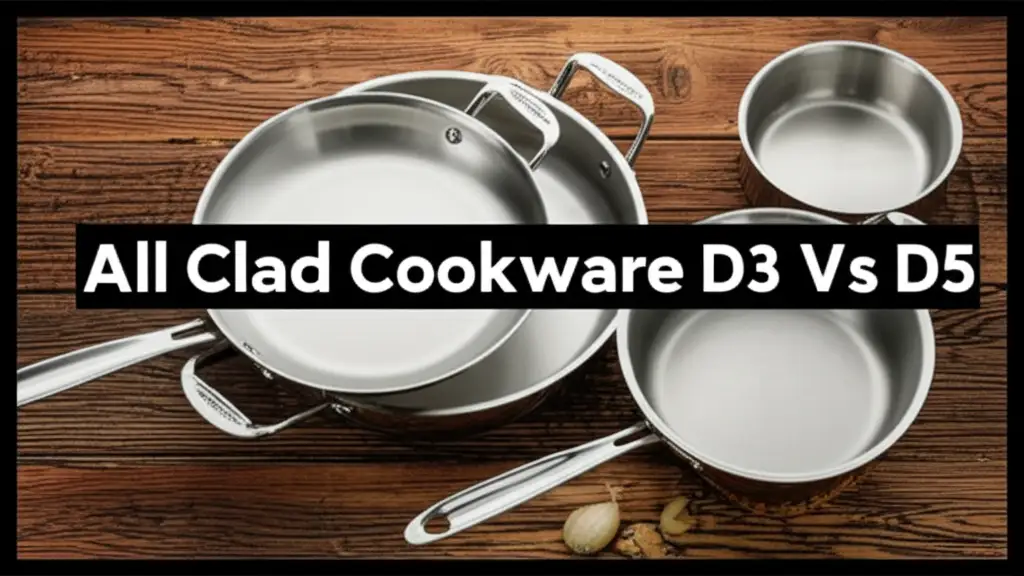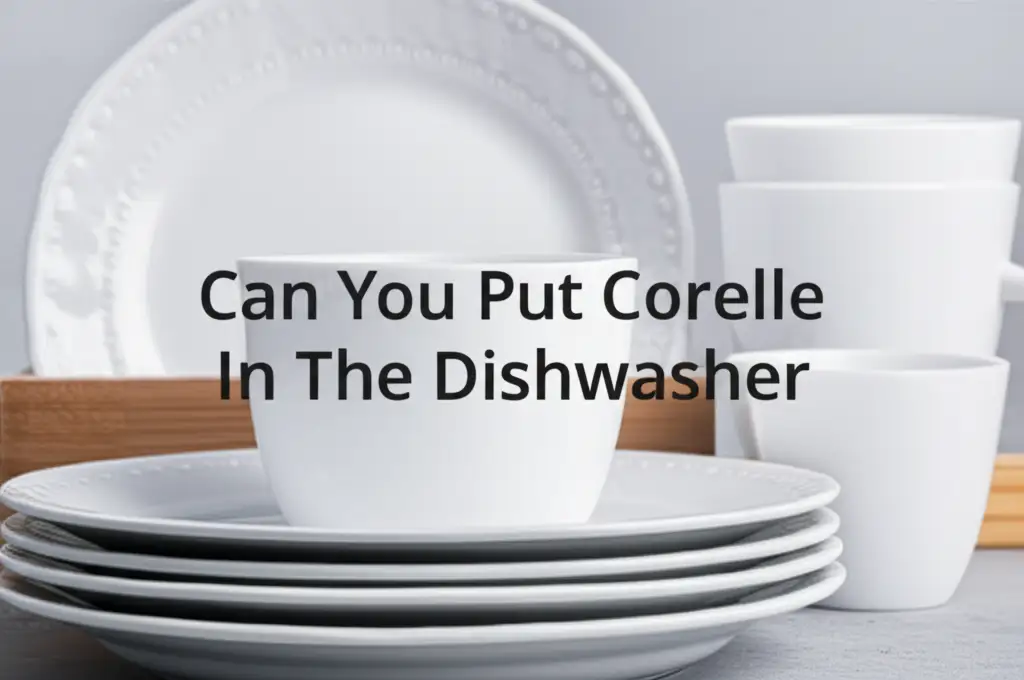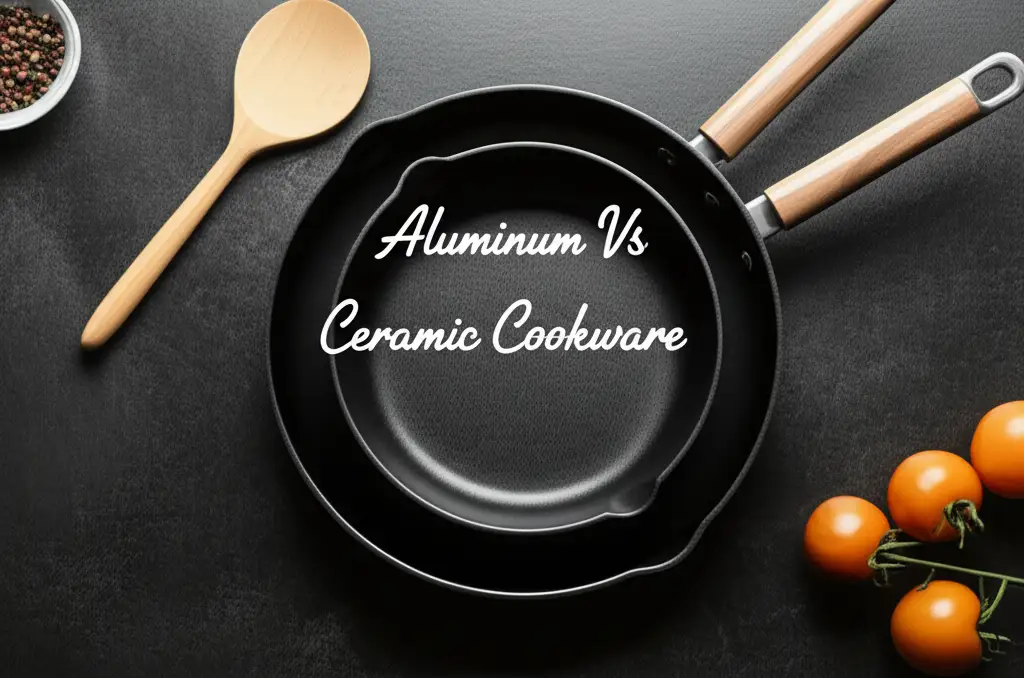· Elira Thomsen · Kitchen & Dining · 15 min read
Anodized Vs Enamel Cookware
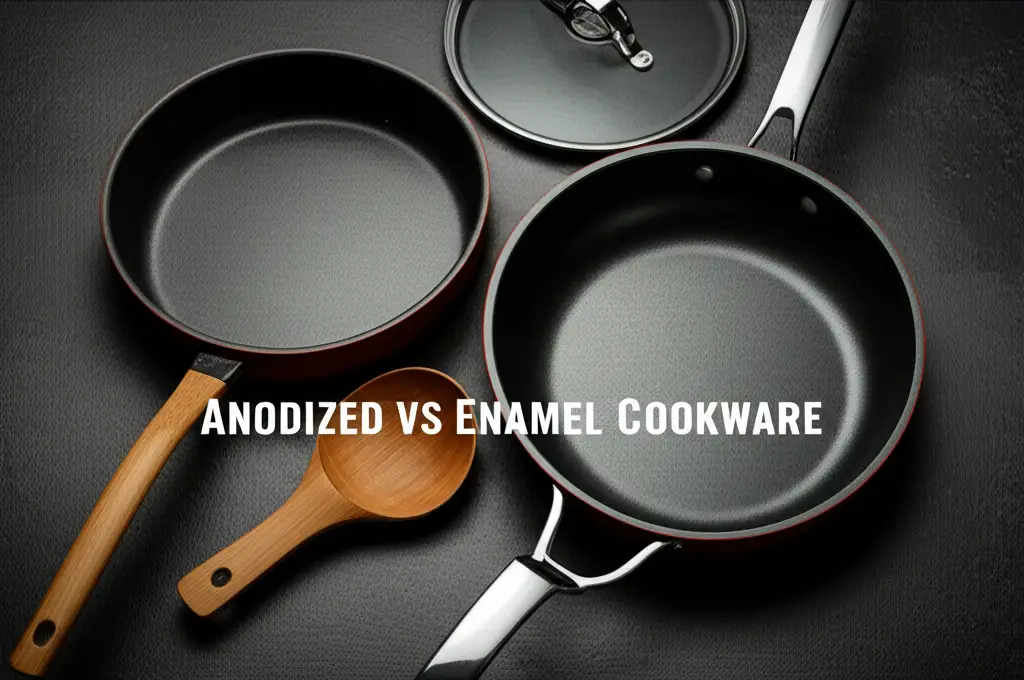
Anodized Vs Enamel Cookware: Which Is Best For Your Kitchen?
Choosing new cookware can feel overwhelming. You stand in the aisle, faced with many choices. Two popular types often catch your eye: anodized and enamel cookware. Both promise great cooking experiences, but they differ significantly.
Understanding these differences helps you make an informed decision. This guide will explore anodized vs enamel cookware in detail. We will look at their construction, performance, durability, and care requirements. By the end, you will know which type best fits your cooking style and kitchen needs. Let’s find your next favorite pan.
Takeaway
- Hard-anodized cookware is aluminum that is electrochemically hardened. It offers durability, even heat, and non-stick properties.
- Enamel cookware is cast iron or steel with a fused glass coating. It provides vibrant colors, excellent heat retention, and non-reactive surfaces.
- Choose hard-anodized for lightweight, durable non-stick needs. Select enamel for slow cooking, oven use, and a classic look.
When you compare anodized vs enamel cookware, think about your cooking habits. Hard-anodized cookware offers great durability and consistent heat distribution. It often features non-stick surfaces, making cleanup easier. Enamel cookware, especially enameled cast iron, excels in heat retention and slow cooking. It is also highly versatile for oven-to-table use.
Understanding Hard-Anodized Cookware: A Deep Dive
Hard-anodized cookware begins as aluminum. Manufacturers place the aluminum in an acidic bath. They then pass an electric current through it. This electrochemical process creates a hard, durable layer on the aluminum’s surface.
This layer is not a coating applied later. It is an integral part of the metal itself. This makes hard-anodized aluminum much harder than stainless steel. It also protects against scratches and corrosion. The process makes aluminum less reactive with acidic foods. This means you can cook tomato sauces without worrying about metal leaching.
Hard-anodized cookware often features a non-stick surface. This non-stick layer is typically PFOA-free. Food slides off easily, and cleanup becomes simple. This makes cooking and serving meals more convenient.
Many professional chefs use hard-anodized pans. They value the even heat distribution. Aluminum is an excellent conductor of heat. The anodized process enhances this while adding strength. This cookware is suitable for searing, frying, and sautéing. It performs well across various cooking tasks.
You will find hard-anodized pots and pans in many kitchen sets. They offer a good balance of performance and maintenance. Their dark, matte finish gives them a sleek, modern look. This cookware is built to withstand daily use. It is a reliable choice for active kitchens.
Exploring Enamel Cookware: Tradition Meets Performance
Enamel cookware typically involves cast iron or steel as its core. A glass-based coating, called enamel, is fused to this core. This fusion happens at very high temperatures. The result is a smooth, non-porous, and colorful surface.
Enameled cast iron is famous for its heat retention. It holds heat evenly and releases it slowly. This quality makes it ideal for slow cooking, braising, and stewing. Many home cooks love it for soups and casseroles. It transitions beautifully from stovetop to oven to table.
The enamel coating provides a non-reactive surface. Unlike bare cast iron, you can cook acidic foods without concern. The enamel prevents metal leaching. It also stops foods from absorbing metallic flavors. This is a big advantage for many recipes.
Enamel cookware comes in a wide range of colors. This makes it a popular choice for its aesthetic appeal. You can match your cookware to your kitchen decor. Brands like Le Creuset and Staub are well-known for their vibrant enamel pieces. These items often become kitchen centerpieces.
Cleaning enamel cookware is generally straightforward. Its smooth surface resists sticking. You can usually clean it with warm soapy water. It does not require seasoning like bare cast iron. This makes it easier to maintain for everyday use. Many people find cooking with enamel a delightful experience.
Durability and Longevity: Which Lasts Longer?
When comparing anodized vs enamel cookware, durability is a key factor. Both types are designed for long-term use. However, their specific strengths and weaknesses differ. Hard-anodized aluminum is incredibly tough. The anodization process creates a surface harder than stainless steel. This makes it highly resistant to scratches and dents.
Hard-anodized cookware also resists corrosion. This means it won’t rust or degrade easily over time. The non-stick coating, if present, is usually robust. However, even the best non-stick surfaces can degrade with improper use. Metal utensils can scratch them, reducing their lifespan. With good care, hard-anodized pans can last many years.
Enamel cookware, especially enameled cast iron, is also very durable. The cast iron core is virtually indestructible. It can handle high temperatures without warping. The enamel coating itself is hard and resistant to scratches. However, enamel is essentially a glass coating. It can chip or crack if dropped or subjected to sudden temperature changes. Thermal shock is a common cause of damage.
A small chip in the enamel does not always ruin the pan. You can often continue using it if the chip is minor. However, a large chip can expose the underlying metal. This can lead to rust or reactivity. Proper handling and storage are crucial for preserving enamel. This helps avoid accidental damage.
In terms of pure resilience against drops and impacts, hard-anodized might edge out enamel. An enamel chip is more likely than a significant dent in hard-anodized. Yet, if cared for perfectly, both can offer decades of service. Your cooking habits and kitchen environment will influence which lasts longer for you.
Cooking Performance and Heat Management
Cooking performance is where the nuances of anodized vs enamel cookware truly shine. Each type offers distinct advantages. Hard-anodized aluminum excels at quick, even heating. Aluminum is a superb conductor of heat. The anodized layer enhances this without adding significant weight. This means your hard-anodized pan heats up fast and distributes heat uniformly. Hot spots are rare, leading to consistent cooking results.
This fast and even heating makes hard-anodized cookware perfect for searing and frying. It’s great for delicate foods that need precise temperature control. The common non-stick surface ensures food releases easily. This is ideal for pancakes, eggs, and fish. Cleanup is also simple. It allows for efficient cooking, especially when you are short on time. Many home cooks appreciate the versatility and ease of use. You can achieve excellent browning without food sticking to the surface.
Enamel cookware, particularly enameled cast iron, is a heat retention champion. Cast iron absorbs heat slowly but holds onto it for a very long time. This makes it ideal for dishes requiring long, gentle simmering. Think about stews, braises, and chili. The consistent heat helps tenderize meats and meld flavors. It’s also perfect for baking bread or roasting chickens. You get a steady, low heat environment.
The enamel surface is non-reactive. This means you can cook acidic ingredients like wine or tomatoes. It won’t react with the metal or pick up odd flavors. The smooth surface also makes it easy to deglaze. You can scrape up delicious browned bits (fond) from the bottom of the pan. This adds immense flavor to sauces and gravies. For tasks needing consistent, prolonged heat, enamel is often the superior choice.
Both types offer excellent performance. Your choice depends on your cooking style. Do you prioritize speed and easy release? Go for hard-anodized. Do you prefer slow, consistent cooking and oven versatility? Enamel is your friend.
Care and Cleaning: Keeping Your Cookware Pristine
Proper care extends the life of any cookware. For anodized vs enamel cookware, the cleaning methods differ. Hard-anodized cookware is relatively easy to maintain. Most manufacturers recommend hand washing. Use warm, soapy water and a soft sponge. Abrasive cleaners or steel wool can damage the non-stick surface. Avoid putting hard-anodized cookware in the dishwasher. Dishwasher detergents can be harsh. They can dull the finish and degrade the non-stick coating over time.
For stubborn food residue, soak the pan for a few minutes. This usually loosens anything stuck. Gentle scrubbing with a nylon brush is fine. Always let the pan cool down before washing. Sudden temperature changes can warp the material. This ensures your hard-anodized pieces remain effective. Proper care maintains their appearance and cooking efficiency. This helps them stay in top shape for years.
Enamel cookware also thrives with gentle care. Hand washing with warm, soapy water is best. A soft cloth or sponge works well. Avoid using metal utensils or harsh scouring pads. These can scratch or chip the glass-like enamel surface. For baked-on food, fill the pan with water and a little dish soap. Bring it to a simmer on the stove for a few minutes. This softens the residue, making it easy to remove.
Unlike bare cast iron, enamel cookware does not need seasoning. This makes maintenance simpler. Avoid extreme temperature changes with enamel. Placing a hot enamel pan under cold water can cause thermal shock. This leads to cracking or chipping of the enamel. Always let your enamel cookware cool gradually. Store it carefully to prevent chips. Using pan protectors or soft cloths between stacked pieces helps. By following these simple rules, your enamel cookware will remain beautiful and functional.
Ultimately, both cookware types benefit from careful handling. This protects their unique surfaces. You gain many years of service from either choice. Just remember their specific care needs.
Health, Safety, and Material Considerations
When selecting cookware, health and safety are paramount. Anodized vs enamel cookware offers distinct material properties. Hard-anodized aluminum is generally considered safe. The anodization process seals the aluminum. This prevents the metal from leaching into food. This is a significant advantage over raw aluminum, which can react with acidic foods. The sealed surface means you do not consume aluminum particles.
Most hard-anodized cookware features a non-stick coating. Modern non-stick coatings are PFOA and PTFE-free, or they use improved versions of PTFE. PFOA was a chemical used in older non-stick coatings and is now phased out. PTFE (Teflon) is safe for cooking at normal temperatures. However, if overheated (above 500°F/260°C), PTFE can release fumes. These fumes are harmless to humans in small amounts but can be dangerous to birds. It is wise to avoid extreme overheating. Always ensure good ventilation when cooking at high temperatures.
Enamel cookware is very safe. The enamel coating is a form of glass. It is inert and non-reactive. This means it will not leach any chemicals into your food. This makes enamel cookware an excellent choice for sensitive individuals. It is also perfect for cooking acidic or alkaline foods. The base material, usually cast iron or steel, is also safe. When the enamel is intact, there are no concerns about metal exposure.
The main safety concern with enamel is if it chips. A small chip can expose the underlying cast iron. While bare cast iron itself is safe, a chipped surface can rust if not dried properly. Using a chipped pan is generally okay if the chip is small and not in direct contact with food. However, deep chips affecting the cooking surface might pose an issue. It is always best to replace cookware with significant damage. Both types offer safe cooking options. Hard-anodized aluminum provides a sealed, non-reactive surface. Enamel cookware offers a completely inert glass barrier.
Cost, Aesthetics, and Investment Value
The cost and appearance of anodized vs enamel cookware also play a role in your decision. Prices for hard-anodized cookware vary widely. You can find basic sets at entry-level prices. High-end sets from premium brands cost more. Generally, hard-anodized cookware offers good value for its performance. It combines durability, even heating, and often a non-stick surface. This makes it an attractive investment for many home cooks.
Aesthetically, hard-anodized cookware has a distinctive look. It typically features a dark, charcoal-gray finish. This matte appearance gives it a sleek, modern, and professional feel. It blends well with contemporary kitchen designs. Some people prefer its understated elegance. While not as vibrant as enamel, its functional design is appealing. It is a workhorse in the kitchen, not a showpiece.
Enamel cookware, especially enameled cast iron, often carries a higher price tag. This is particularly true for renowned brands. These pieces are investments. They can last for generations with proper care. The initial cost might seem high, but their longevity justifies it. Their versatility also adds to their value. You can use them on the stovetop, in the oven, and for serving.
The aesthetic appeal of enamel cookware is undeniable. It comes in a vast array of rich, vibrant colors. From fiery reds to serene blues, there is an enamel piece for every kitchen decor. They often feature classic designs, making them beautiful additions to any kitchen. Many people collect enamel pieces. They often display them as part of their kitchen’s charm. These pots and pans are not just tools. They are statements of style.
Consider your budget and how important aesthetics are to you. Hard-anodized offers functional value and a modern look. Enamel offers timeless beauty and exceptional longevity. Both are solid investments. The choice depends on your personal priorities.
Making Your Choice: Anodized or Enamel?
Deciding between anodized vs enamel cookware comes down to your personal cooking style and needs. Each type excels in different areas. Think about the dishes you cook most often. Consider your kitchen setup and how you prioritize things.
If you value quick heating and easy food release, hard-anodized cookware is an excellent choice. Its even heat distribution makes searing and sautéing effortless. The non-stick surface simplifies cooking delicate foods like eggs. If you often prepare stir-fries, omelets, or pan-fried dishes, hard-anodized will serve you well. It’s also lighter than enamel, making it easier to handle. Many home cooks appreciate its practicality for everyday meals. For general purpose cooking, it often offers the perfect balance. Need a versatile pan? Consider a good air fry oven vs air fryer as well, they often complement traditional cookware well.
However, if your passion lies in slow cooking, braising, or baking, enamel cookware might be your best friend. Its superior heat retention is unmatched for stews, soups, and roasts. The non-reactive surface allows you to cook acidic ingredients without worry. Enameled cast iron transitions seamlessly from stovetop to oven to table. This makes it ideal for one-pot meals and entertaining. If you appreciate traditional cooking methods and heirloom quality, enamel is a fantastic investment. It also adds a pop of color to your kitchen.
Consider your entire kitchen arsenal. You might already have a versatile chef knife or a powerful blender. Adding cookware that complements your existing tools makes sense. Some cooks even own both types. They use hard-anodized for daily quick meals and enamel for weekend projects. Ultimately, both offer unique benefits. Your ideal kitchen might include a mix of both.
FAQ Section
Is anodized cookware truly non-stick?
Hard-anodized cookware often features a non-stick coating. This coating makes food release easy and cleanup simple. While very effective, it is not inherent to the anodized aluminum itself. The non-stick layer is applied after the anodization process. Proper care helps maintain its non-stick properties over time.
Can enamel cookware go in the oven?
Yes, enamel cookware is excellent for oven use. Especially enameled cast iron, it handles high oven temperatures well. Its superior heat retention also makes it ideal for baking and roasting. Always check the manufacturer’s recommendations for maximum oven temperature limits, as lid knobs might have lower heat tolerances.
How do I prevent chipping on enamel cookware?
To prevent chipping, avoid dropping enamel cookware. Do not use metal utensils, as they can scratch the surface. Also, prevent sudden temperature changes (thermal shock). Always let a hot pan cool down naturally before washing it with cold water. Store pieces carefully to avoid knocks.
Is anodized cookware dishwasher safe?
Most manufacturers recommend hand washing hard-anodized cookware. Dishwasher detergents can be abrasive. They may dull the finish and degrade the non-stick coating over time. Hand washing with mild soap and a soft sponge helps preserve your pan’s integrity and appearance for longer.
What are the main advantages of each type?
Hard-anodized cookware offers excellent heat conductivity and is lightweight. It often has a durable non-stick surface, making it great for everyday cooking. Enamel cookware, especially cast iron, excels in heat retention and slow cooking. It is non-reactive and comes in various appealing colors.
Can I use metal utensils on these cookwares?
It is generally not recommended to use metal utensils on either. Metal can scratch or chip the non-stick coating on hard-anodized pans. For enamel cookware, metal can scratch or chip the glass-like surface. Always use silicone, wood, or plastic utensils to protect your investment.
Conclusion
Choosing between anodized vs enamel cookware involves weighing their distinct characteristics. Hard-anodized cookware, derived from electrochemically treated aluminum, offers exceptional durability. It heats quickly and evenly, making it perfect for everyday frying and sautéing. Its non-stick properties simplify cooking and cleaning. This cookware provides a lightweight and efficient cooking experience.
Enamel cookware, typically cast iron with a glass coating, provides superior heat retention. It is ideal for slow cooking, braising, and baking. Its non-reactive surface ensures pure food flavors. The wide range of colors also adds aesthetic appeal to your kitchen. Both types offer long-lasting performance. Your cooking habits and preferred dishes should guide your decision. Consider which features align best with your culinary adventures. Choose the cookware that empowers you to create delicious meals with joy.
- anodized cookware
- enamel cookware
- cookware comparison
- kitchen essentials
- cooking tips
- hard-anodized
- enameled cast iron


